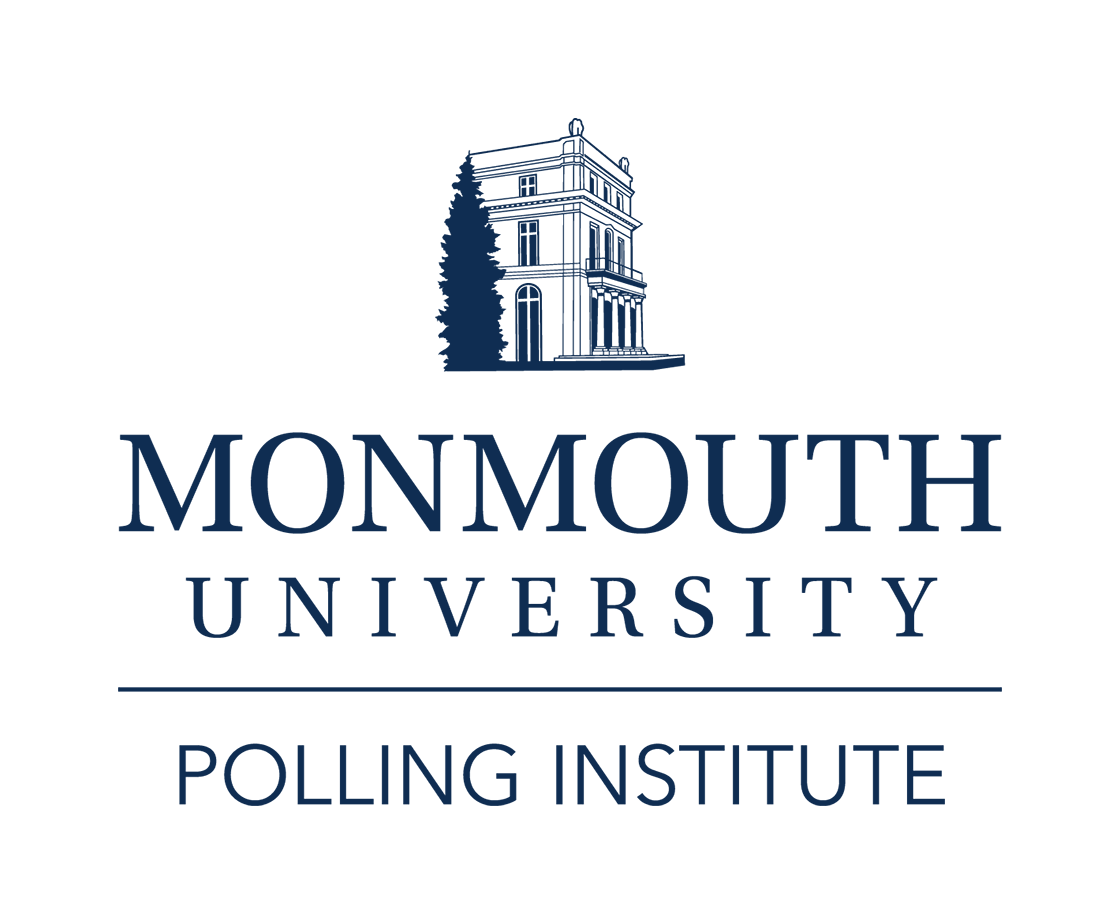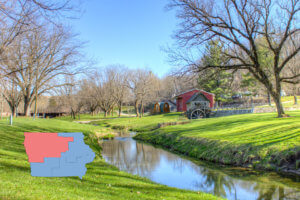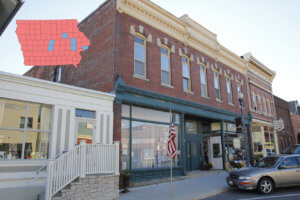West Long Branch, NJ – Hillary Clinton leads Bernie Sanders by 22 points in the latest Monmouth University Poll of likely Iowa Democratic caucusgoers. Voters would be happy with either candidate as the party’s nominee, but a variety of turnout projections suggest that the road to victory is a very steep one for Sanders.
Hillary Clinton currently garners the support of 55% of likely Democratic caucusgoers to 33% for Bernie Sanders. Martin O’Malley clocks in at 6% of the vote. Clinton enjoys a large lead over Sanders among female voters (61% to 27%) and a narrow edge among male voters (47% to 42%). She also leads among voters age 50 and older (63% to 26%), while Sanders actually has the advantage among likely caucusgoers who are under 50 years old (48% to 38% for Clinton).
These results are not directly comparable to Monmouth’s prior Iowa poll due to a change in sampling methodology. Monmouth’s late October sample was drawn from past state primary voters only. This group makes up just over half of the current sample, with the remainder drawn from regular general election voters and new registrants.
Among past primary voters only, Clinton currently leads Sanders by a larger 27 point margin – 57% to 30%. Still, this is down from the 65% to 24% lead she held among this particular electorate in Monmouth’s last poll which was taken shortly after the first Democratic candidate debate, Clinton’s Benghazi Committee appearance, and Joe Biden’s decision not to run.
Among Democratic non-primary voters who say they will caucus in February, Clinton holds a 22 point lead (56% to 34%). Among non-Democrats who say they will change their registration to caucus with the Democrats – representing about 14% of the current sample – Clinton and Sanders are tied at 45% each.
“The core of this electorate is going to be registered Democrats. And Clinton appears to have that group firmly in her corner,” said Patrick Murray, director of the independent Monmouth University Polling Institute in West Long Branch, NJ.
Turnout in the Iowa Democratic caucuses is extremely unpredictable. Over the past 35 years, reported turnout has ranged from a low of about 30,000 in 1992 to a high of nearly 240,000 in 2008 according to published reports. The current poll’s screening rate for likely caucusgoers suggests a turnout of about 100,000 voters in 2016.
Recognizing the historical volatility in Democratic caucus turnout, Monmouth tested a few vote simulations in addition to the reported projection above. Increasing the model to a turnout of approximately 150,000 voters – which would be the second highest turnout on record – would slightly narrow Clinton’s lead over Sanders to 19 points (54% to 35%). Increasing it still further to approximately 200,000 voters – near 2008’s all-time high – would shrink Clinton’s lead to 13 points (51% to 38%). However, Monmouth’s projection in this poll (based on a combination of past voting history and self-reported likelihood to caucus) is lower leading to this poll’s reported current vote share of 55% for Clinton to 33% for Sanders.
“Sanders’s path to victory in Iowa remains formidable, regardless of the size of turnout in February,” said Murray.
The Monmouth University Poll also found that likely caucusgoers hold overwhelmingly positive views of both Clinton (85% favorable – 9% unfavorable) and Sanders (80% favorable – 6% unfavorable). O’Malley earns a 49% favorable and 10% unfavorable rating, with 41% having no opinion of him.
Most voters would be happy if any of the three remaining contenders became the Democratic nominee. Nearly 9-in-10 would be either enthusiastic (43%) or satisfied (45%) with Clinton as the nominee; 8-in-10 say the same about Sanders (30% enthusiastic and 50% satisfied), and just under 6-in-10 feel the same about O’Malley (9% enthusiastic and 48% satisfied). Nearly 3-in-4 (74%) Sanders voters say they would be either enthusiastic or satisfied with Clinton as the party’s standard-bearer and a similar number (72%) of Clinton voters say the same about Sanders.
Four-in-ten (41%) likely caucusgoers say they have locked in their candidate choice, including 47% of Clinton supporters and 39% of Sanders backers. Another 38% say they have a strong preference but are willing to consider another candidate. Just 1-in-5 have only a slight preference (11%) or are essentially undecided (10%) at this point.
The poll also found that Democratic caucusgoers have different priorities than their Republican counterparts in Iowa. Even after recent events in California and Paris, Democratic voters prioritize the economy (33%) as their top issue in the nominating process over national security and terrorism (17%). A Monmouth poll released yesterday showed the opposite result for Republican caucusgoers, who place national security and terrorism (40%) as their top concern over the economy (15%).
The Monmouth University Poll was conducted by telephone from December 3 to 6, 2015 with 405 Iowa voters likely to attend the Democratic presidential caucuses in February 2016. This sample has a margin of error of ±4.9 percent. The poll was conducted by the Monmouth University Polling Institute in West Long Branch, NJ.
DATA TABLES
The questions referred to in this release are as follows:
(* Some columns may not add to 100% due to rounding.)
1. Who would you support if the presidential caucus was being held today and the candidates for the Democratic nomination were – [NAMES WERE ROTATED]
| Dec. 2015 | |
| Hillary Clinton | 55% |
| Bernie Sanders | 33% |
| Martin O’Malley | 6% |
| (VOL) Other | 1% |
| (VOL) “Uncommitted” | 2% |
| (VOL) Undecided | 3% |
| (n) |
405 |
2. And who would be your second choice?
|
Clinton |
Sanders | |
| Hillary Clinton |
n/a | 65% |
| Bernie Sanders | 66% |
n/a |
| Martin O’Malley | 17% | 25% |
| (VOL) Other | 0% | 2% |
| (VOL) No one | 14% | 7% |
| (VOL) Undecided | 3% | 2% |
3. Which of the following best describes where your decision stands at this moment: I am completely decided on which candidate I will support, I have a strong preference right now but I am willing to consider other candidates, I have a slight preference among a group of candidates I like, or I am really undecided among a number of candidates?
| Dec. 2015 | |
| Completely decided | 41% |
| Strong preference | 38% |
| Slight preference | 11% |
| Undecided | 10% |
4. I’m going to read you a few names of people who are running for president in 2016. Please tell me if your general impression of each is favorable or unfavorable, or if you don’t really have an opinion. [NAMES WERE ROTATED]
|
Favorable | Unfavorable |
No opinion | |
| Former Secretary of State Hillary Clinton | 85% | 9% | 6% |
| Vermont Senator Bernie Sanders | 80% | 6% | 14% |
| Former Maryland Governor Martin O’Malley | 49% | 10% | 41% |
5. How would you feel if [CANDIDATE NAME] became the Democratic nominee – enthusiastic, satisfied, dissatisfied, or upset? [NAMES WERE ROTATED]
|
Hillary | Bernie Sanders |
Martin | |
| Enthusiastic | 43% | 30% | 9% |
| Satisfied | 45% | 50% | 48% |
| Dissatisfied | 8% | 14% | 25% |
| Upset | 3% | 3% | 7% |
| (VOL) Don’t know | 1% | 3% | 11% |
6. Which of the following issues is the most important to you in deciding who to support for the Republican nomination? [ITEMS WERE ROTATED]
| Dec. 2015 | |
| Immigration | 3% |
| The economy and jobs | 33% |
| National security | 10% |
| Social issues like abortion and same-sex marriage | 8% |
| Taxes and government spending | 8% |
| Education | 11% |
| Terrorism | 7% |
| (VOL) All equally important | 12% |
| (VOL) Other | 6% |
| (VOL) Don’t know | 2% |
The Monmouth University Poll was sponsored and conducted by the Monmouth University Polling Institute from December 3 to 6, 2015 with a statewide random sample of 405 Iowa voters drawn from a list of registered voters who voted in at least one of the last two state primary elections, voted in both the 2012 and 2014 general elections, or have registered to vote in the past year. Results in this report are based on voters who say they are likely to attend the Democratic presidential caucuses in February 2016 (including voters already registered as Democrats and voters who say they will declare themselves as Democrat for the caucuses). This includes 294 contacted by a live interviewer on a landline telephone and 111 contacted by a live interviewer on a cell phone, in English. Monmouth is responsible for all aspects of the survey design, data weighting and analysis. Final sample is weighted for age and gender based on state registration list information on the pool of all voters who meet the initial selection criteria. Data collection support provided by Braun Research (field) and Aristotle (voter list). For results based on the total sample, one can say with 95% confidence that the error attributable to sampling has a maximum margin of plus or minus 4.9 percentage points (unadjusted for sample design). Sampling error can be larger for sub-groups (see table below). In addition to sampling error, one should bear in mind that question wording and practical difficulties in conducting surveys can introduce error or bias into the findings of opinion polls.
|
POLL DEMOGRAPHICS (weighted) | ||
| 44% Male | 12% 18-34 | 94% White, non-Hispanic |
| 56% Female | 20% 35-49 | 6% Other |
| 36% 50-64 | ||
| 33% 65+ | ||
Click on pdf file link below for full methodology and results by key demographic groups.




